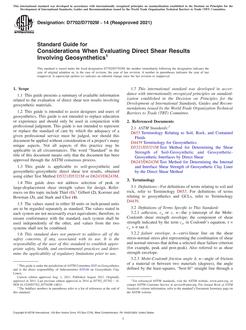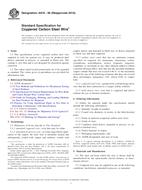1.1 These test methods cover procedures by which autohesives can be tested in four commonly practiced stressing modes, namely: compression shear, cleavage, climbing drum peel, and T-peel, and in various combinations of rigid-to-rigid, flexible-to-rigid, and flexible-to-flexible adherends that include wood, aluminum, steel flakeboard, and plastic laminates. Quantitative test methods that involve bond formation by impact are also provided. Three pressure modes are provided: static, roller, and impact. Because there are many types of contact adhesives being used to bond many different materials under widely differing conditions, these test methods are designed to allow the user to select the test mode, coating thickness, temperature and relative humidity conditions, pressure magnitude and mode, open time, and bond-conditioning time.
1.1.1 The bond-formation process used with autohesives is unlike that of all other adhesives and in consequence, testing of autohesives requires methods that are unlike those provided by other ASTM standards. See Annex A1.
1.2 A choice of adherends is available in each test mode. The combination of adherends that can be bonded together is limited to those shown in Appendix X1.
1.3 Methods for application of pressure are available in each test mode. For a particular combination of substrates, the means available for application of pressure are limited to those shown in Appendix X2.
1.4 The values stated in inch-pound units are to be regarded as the standard. The SI units given in parentheses are for information only.
1.5 This standard does not purport to address all of the safety concerns, if any, associated with its use. It is the responsibility of the user of this standard to establish appropriate safety and health practices and determine the applicability of regulatory limitations prior to use. Specific precautionary statements are given in 7.5.
Product Details
- Published:
- 04/01/2004
- Number of Pages:
- 13
- File Size:
- 1 file , 190 KB


